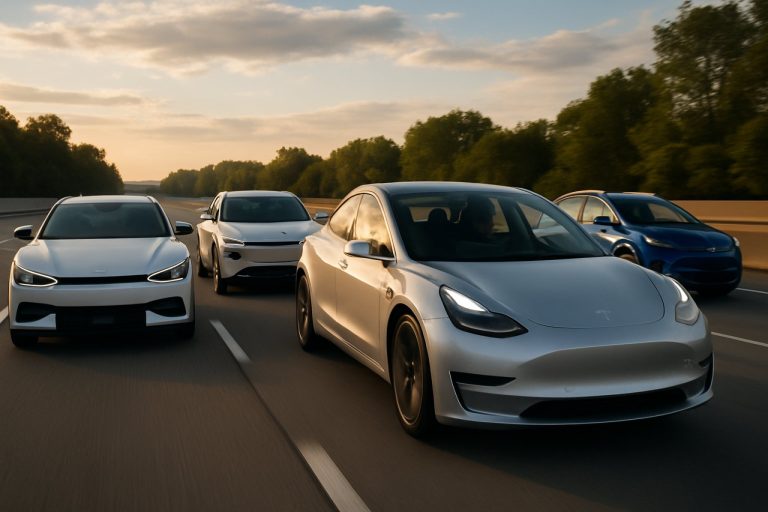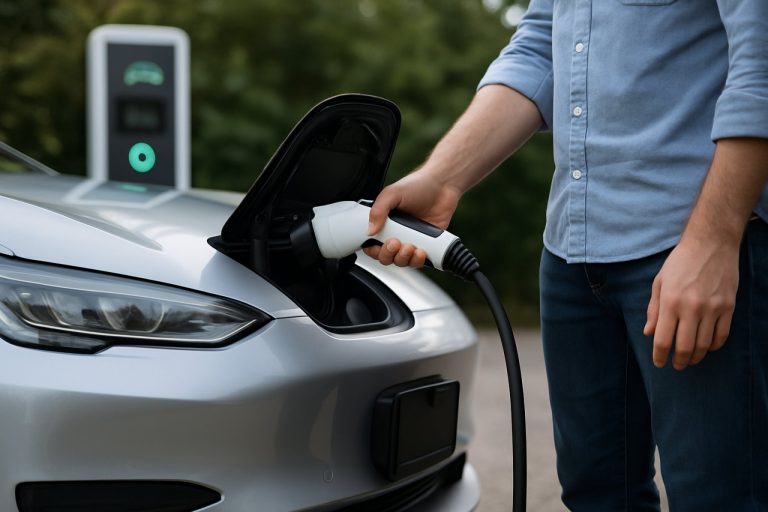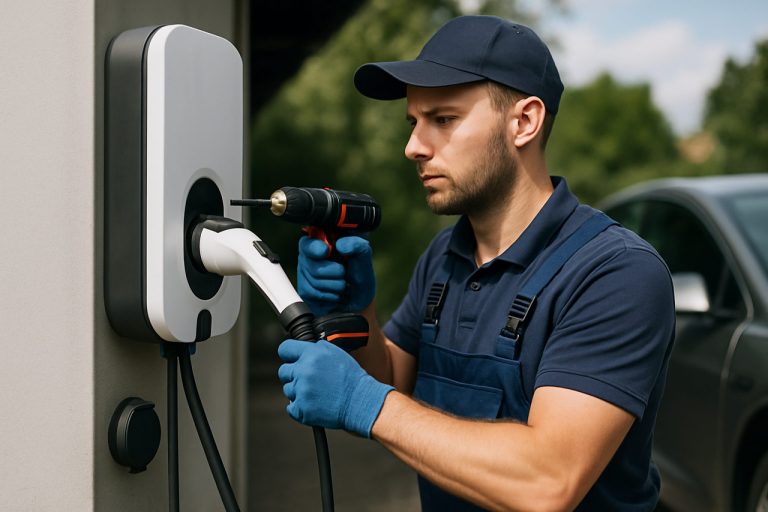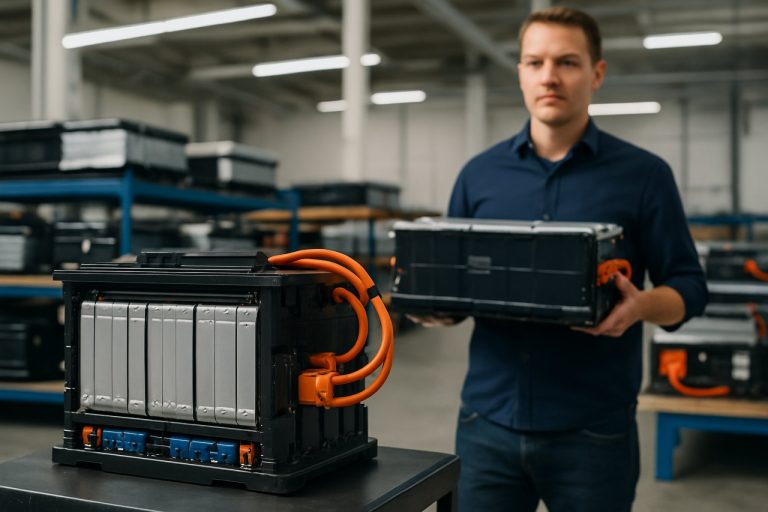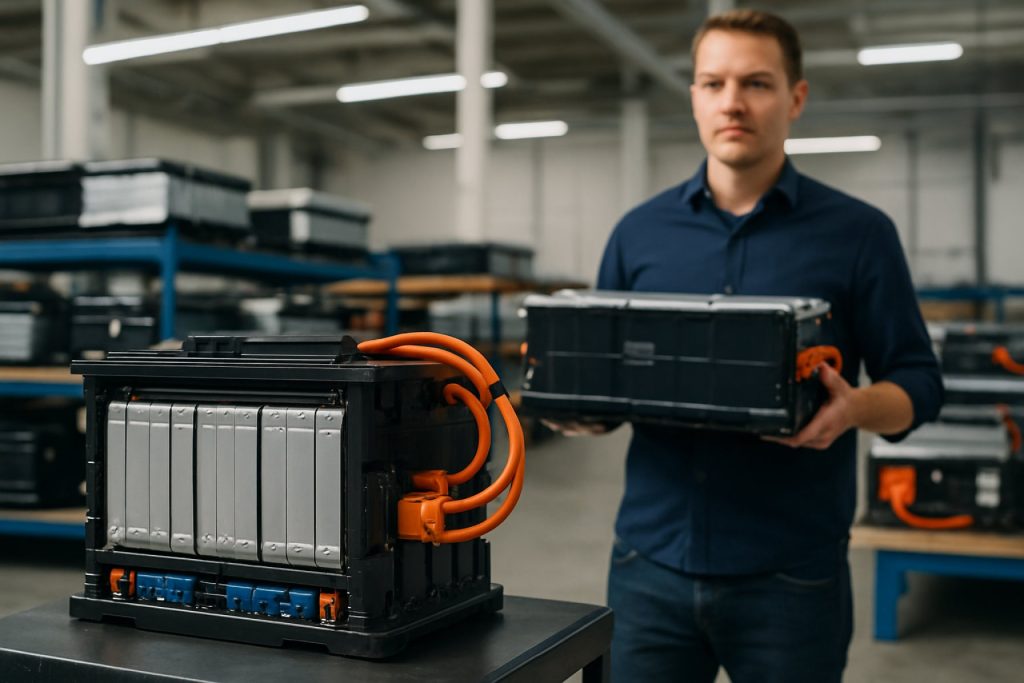
Unlocking the Value of Used EV Batteries in 2025: How Second-Life Solutions Are Transforming Energy Storage and Sustainability. Discover the Market Forces, Technologies, and Opportunities Driving Explosive Growth.
- Executive Summary: 2025 Market Snapshot and Key Trends
- Market Size, Growth Forecasts, and Revenue Projections (2025–2029)
- Key Players and Strategic Partnerships in Second-Life EV Batteries
- Technological Innovations: Repurposing, Testing, and Integration
- Regulatory Landscape and Industry Standards (e.g., IEEE, IEC)
- Business Models: Leasing, Refurbishment, and Energy-as-a-Service
- Applications: Grid Storage, Commercial, and Residential Use Cases
- Supply Chain, Sourcing, and End-of-Life Logistics
- Sustainability Impact and Circular Economy Initiatives
- Future Outlook: Challenges, Opportunities, and Market Entry Strategies
- Sources & References
Executive Summary: 2025 Market Snapshot and Key Trends
The market for electric vehicle (EV) battery second-life solutions is entering a pivotal phase in 2025, driven by the accelerating retirement of first-generation EV batteries and mounting global emphasis on circular economy practices. As EV adoption surges, a growing volume of batteries is reaching the end of their automotive life—typically after 8-10 years of service—yet these batteries often retain 60-80% of their original capacity, making them suitable for less demanding applications such as stationary energy storage.
In 2025, the volume of retired EV batteries available for second-life use is expected to surpass 100 GWh globally, with projections indicating exponential growth in the coming years as more EVs reach maturity. This influx is catalyzing the development of dedicated second-life battery supply chains and business models. Major automotive manufacturers and battery producers are actively piloting and scaling second-life initiatives. For example, Nissan Motor Corporation has been a pioneer, repurposing used LEAF batteries for stationary storage and off-grid applications since 2018, and continues to expand its second-life operations. Similarly, BMW Group is deploying retired EV batteries in grid-scale storage projects, supporting renewable energy integration and grid stability.
Battery manufacturers are also entering the second-life market. Contemporary Amperex Technology Co., Limited (CATL), the world’s largest battery producer, has established dedicated subsidiaries to manage battery repurposing and recycling, aiming to create closed-loop supply chains. LG Energy Solution is collaborating with energy companies to deploy second-life battery systems for commercial and industrial energy storage, while Panasonic Corporation is exploring partnerships to extend battery lifecycles beyond automotive use.
Key trends shaping the 2025 landscape include the standardization of battery health diagnostics, advances in battery management systems for second-life applications, and the emergence of digital platforms to track battery provenance and performance. Regulatory frameworks in regions such as the European Union are also mandating extended producer responsibility and setting minimum requirements for battery reuse, further accelerating market development.
Looking ahead, the second-life EV battery market is poised for rapid expansion, with industry stakeholders investing in scalable repurposing infrastructure and innovative business models. The sector is expected to play a critical role in supporting renewable energy integration, grid resilience, and the overall decarbonization of energy systems, while also addressing sustainability challenges associated with battery waste and resource scarcity.
Market Size, Growth Forecasts, and Revenue Projections (2025–2029)
The market for EV battery second-life solutions is poised for significant expansion between 2025 and 2029, driven by the accelerating adoption of electric vehicles (EVs) and the growing need for sustainable energy storage. As the first large wave of EVs sold in the late 2010s and early 2020s reach the end of their automotive life, a substantial volume of used batteries is entering the supply chain, creating new opportunities for repurposing and value creation.
Major automotive manufacturers and battery suppliers are actively developing second-life programs. Nissan Motor Corporation has been a pioneer, with its 4R Energy joint venture repurposing used LEAF batteries for stationary storage and industrial applications. BMW Group is deploying retired EV batteries in grid-scale storage projects, while Tesla, Inc. and LG Energy Solution are investing in research and pilot projects to extend battery lifecycles beyond automotive use.
By 2025, the global pool of retired EV batteries suitable for second-life applications is expected to exceed 100 GWh, with annual additions rising sharply through 2029 as EV adoption accelerates. Volkswagen AG projects that by 2025, tens of thousands of its EV batteries will be available for repurposing each year, supporting a growing ecosystem of second-life integrators and energy storage providers.
Revenue from second-life battery solutions is forecast to grow robustly. Industry participants such as Renault Group and Hyundai Motor Company are launching commercial second-life storage products, targeting both grid-scale and commercial/industrial customers. The value proposition is compelling: second-life batteries can deliver energy storage at a cost 30–70% lower than new batteries, depending on application and refurbishment costs.
Looking ahead to 2029, the market is expected to mature rapidly, with annual revenues from second-life battery deployments projected to reach several billion dollars globally. The sector’s growth will be underpinned by regulatory support for circular economy initiatives, falling costs of battery diagnostics and repurposing, and the increasing need for flexible, distributed energy storage to support renewable integration. As more OEMs—including Toyota Motor Corporation and Ford Motor Company—announce second-life partnerships and pilot projects, the market is set for robust expansion and diversification in the latter half of the decade.
Key Players and Strategic Partnerships in Second-Life EV Batteries
The landscape of second-life EV battery solutions in 2025 is shaped by a dynamic network of key players and strategic partnerships, as automakers, battery manufacturers, and energy companies collaborate to unlock new value from used electric vehicle batteries. As the first large wave of EV batteries reaches the end of their automotive life, the focus has shifted to repurposing these batteries for stationary energy storage and other applications, extending their useful life and supporting sustainability goals.
Among the most prominent players, Nissan Motor Corporation has been a pioneer, launching its 4R Energy joint venture to repurpose used LEAF batteries for stationary storage and commercial applications. In 2024, Nissan expanded its partnerships with utility companies in Japan and Europe to deploy second-life battery systems for grid balancing and renewable integration. Similarly, Renault Group has advanced its “Advanced Battery Storage” program, collaborating with energy providers to install large-scale second-life battery systems at industrial sites and renewable energy facilities.
Battery manufacturers are also central to the ecosystem. Contemporary Amperex Technology Co., Limited (CATL), the world’s largest battery producer, has established dedicated subsidiaries for battery recycling and second-life applications, partnering with automakers and energy storage integrators in China and Europe. LG Energy Solution has announced pilot projects in South Korea and the United States, working with local utilities to demonstrate the viability of repurposed EV batteries for grid-scale storage.
Automakers are increasingly forming alliances with energy and recycling companies. BMW Group has partnered with Vattenfall to deploy second-life battery storage at wind farms in Germany, while Ford Motor Company is collaborating with DTE Energy in the U.S. to pilot second-life battery storage for commercial and community energy projects. Tesla, Inc. continues to explore second-life applications, leveraging its vertically integrated battery supply chain and energy storage business.
Looking ahead, the next few years are expected to see a surge in second-life battery deployments as more EVs reach end-of-life and regulatory frameworks mature. Strategic partnerships will remain crucial, with companies like Hyundai Motor Company and Enel expanding pilot projects into commercial-scale operations. The sector is poised for rapid growth, driven by the dual imperatives of sustainability and grid modernization, with key players leveraging partnerships to scale up second-life battery solutions globally.
Technological Innovations: Repurposing, Testing, and Integration
The rapid growth of electric vehicle (EV) adoption is driving a parallel surge in end-of-life batteries, prompting significant technological innovation in second-life solutions. In 2025 and the coming years, the focus is on repurposing, testing, and integrating used EV batteries into new applications, particularly stationary energy storage systems (ESS).
Repurposing involves assessing and reconfiguring EV batteries that retain 70–80% of their original capacity for less demanding applications. Major automakers and battery manufacturers are leading this effort. Nissan Motor Corporation has been a pioneer, with its 4R Energy joint venture repurposing Nissan LEAF batteries for commercial and residential ESS, as well as for powering streetlights and backup systems. BMW Group has also deployed used i3 batteries in grid-scale storage projects, demonstrating the technical feasibility and economic potential of second-life batteries.
Testing and diagnostics are critical to ensure safety and performance. Automated systems are being developed to rapidly assess battery health, state-of-charge, and remaining useful life. Panasonic Corporation and LG Energy Solution are investing in advanced battery management systems (BMS) and AI-driven analytics to streamline the evaluation process. These technologies enable efficient sorting of batteries for reuse, recycling, or disposal, reducing costs and environmental impact.
Integration of second-life batteries into energy storage solutions is accelerating, with utilities and renewable energy developers partnering with automotive OEMs. Renault Group has launched large-scale projects in Europe, integrating used EV batteries into grid-balancing and renewable energy storage systems. Similarly, Tesla, Inc. is exploring the use of retired vehicle batteries in its Powerwall and Powerpack products, leveraging its expertise in battery pack design and energy management.
Looking ahead, the outlook for second-life EV battery solutions is promising. Industry bodies such as International Energy Agency project that by 2030, the global stock of used EV batteries suitable for repurposing could exceed 200 GWh, supporting the transition to renewable energy and grid resilience. Continued innovation in repurposing, testing, and integration technologies will be essential to unlock the full value of second-life batteries, reduce waste, and advance circular economy goals in the EV sector.
Regulatory Landscape and Industry Standards (e.g., IEEE, IEC)
The regulatory landscape and industry standards for EV battery second-life solutions are rapidly evolving as the volume of retired electric vehicle (EV) batteries increases and the need for sustainable end-of-life management becomes more urgent. In 2025, governments and industry bodies are intensifying efforts to establish clear frameworks that ensure safety, environmental protection, and market viability for repurposed batteries.
Globally, the IEEE and the International Electrotechnical Commission (IEC) are at the forefront of developing technical standards for second-life battery applications. The IEEE has published standards such as IEEE 1625 and IEEE 1725, which, while originally focused on portable batteries, are being referenced and adapted for larger-format lithium-ion batteries used in EVs. The IEC, through working groups like TC 21 and TC 120, is actively developing and updating standards (e.g., IEC 62933 for stationary energy storage) that address safety, performance, and testing protocols for repurposed batteries.
In the European Union, the revised Battery Regulation (EU) 2023/1542, which comes into force in 2025, introduces mandatory requirements for battery passporting, traceability, and extended producer responsibility. This regulation compels manufacturers and recyclers to document the lifecycle of batteries, including their second-life use, and to meet strict environmental and safety criteria. The regulation is expected to accelerate the adoption of second-life solutions by providing legal certainty and harmonized rules across member states. Major automakers and battery suppliers such as Volkswagen AG and Contemporary Amperex Technology Co., Limited (CATL) are actively participating in pilot projects and industry consortia to align with these requirements.
In the United States, the Department of Energy (DOE) and the Environmental Protection Agency (EPA) are collaborating with industry stakeholders to develop best practices and voluntary guidelines for second-life battery deployment. The DOE’s Office of Energy Efficiency & Renewable Energy is funding demonstration projects and supporting the development of standards for repurposed EV batteries in stationary storage and grid applications. Meanwhile, the UL Standards & Engagement is updating UL 1974, a key standard for evaluating the reuse and repurposing of batteries, to reflect the latest technological and market developments.
Looking ahead, the next few years will see increased harmonization of standards and regulations, driven by cross-border collaborations and the growing involvement of major industry players. As the regulatory framework matures, it is expected to lower barriers for investment and scale-up, while ensuring that second-life battery solutions are safe, reliable, and environmentally sound.
Business Models: Leasing, Refurbishment, and Energy-as-a-Service
The rapid growth of electric vehicle (EV) adoption is driving a parallel surge in the volume of used batteries, catalyzing innovative business models for second-life battery solutions. As of 2025, three primary models—leasing, refurbishment, and energy-as-a-service (EaaS)—are shaping the commercial landscape for repurposing EV batteries.
Leasing models are gaining traction as automakers and battery manufacturers seek to retain ownership of batteries throughout their lifecycle. By leasing batteries to EV owners, companies can ensure the return of used units for controlled second-life deployment. Nissan Motor Corporation has been a pioneer, offering battery leasing for its LEAF model in select markets, which facilitates the collection and repurposing of batteries for stationary storage applications. Similarly, Renault Group has implemented battery leasing schemes, enabling the company to manage end-of-life batteries and integrate them into grid storage projects.
Refurbishment is central to extending battery value. Companies specializing in battery diagnostics and remanufacturing, such as Contemporary Amperex Technology Co., Limited (CATL), are investing in advanced testing and reassembly lines to restore used EV batteries for secondary use. In 2025, refurbishment facilities are scaling up in regions with high EV penetration, notably in Europe and China, where regulatory frameworks encourage circular economy practices. Panasonic Corporation is also active in this space, collaborating with automakers to develop protocols for safe and efficient battery refurbishment.
Energy-as-a-Service (EaaS) leverages second-life batteries for distributed energy storage, offering customers access to energy storage capacity without the need for ownership. This model is being adopted by utilities and technology providers to support grid balancing, renewable integration, and backup power. Enel S.p.A., a major European utility, is deploying second-life battery systems in commercial and industrial settings, providing energy storage as a managed service. Tesla, Inc. is also exploring the integration of used EV batteries into its energy storage product lines, further blurring the lines between automotive and stationary energy sectors.
Looking ahead, the convergence of these business models is expected to accelerate as battery volumes increase and digital platforms enable more efficient tracking and management of battery assets. Strategic partnerships between automakers, battery manufacturers, and energy companies will be crucial in scaling second-life solutions, reducing costs, and maximizing the environmental and economic benefits of EV battery reuse.
Applications: Grid Storage, Commercial, and Residential Use Cases
As the global electric vehicle (EV) market matures, the volume of retired EV batteries is set to increase significantly in 2025 and the following years. These batteries, while no longer optimal for automotive use, retain substantial capacity—often 70-80%—making them valuable for second-life applications. The repurposing of EV batteries is emerging as a key strategy to extend battery lifespans, reduce waste, and support the energy transition, particularly in grid storage, commercial, and residential sectors.
Grid storage is currently the most prominent application for second-life EV batteries. Utilities and energy companies are deploying these batteries to provide cost-effective stationary storage, helping to balance supply and demand, integrate renewable energy, and enhance grid resilience. For example, Nissan Motor Corporation has partnered with energy providers to deploy used Leaf batteries in grid-scale storage projects in Japan and Europe. Similarly, Enel, a major global utility, has piloted second-life battery installations at its power plants, demonstrating their ability to deliver frequency regulation and peak shaving services.
In the commercial sector, second-life batteries are being adopted by businesses seeking to manage energy costs and improve sustainability. Warehouses, factories, and data centers are integrating these batteries for behind-the-meter storage, enabling load shifting, demand charge reduction, and backup power. BMW Group has implemented second-life battery storage at its Leipzig plant, using retired EV batteries to stabilize energy supply and support renewable integration. Renault Group has also launched projects in partnership with commercial real estate and logistics companies, repurposing EV batteries for building energy management and microgrid applications.
Residential use cases are gaining traction as well, particularly in regions with high solar adoption and time-of-use electricity pricing. Second-life battery systems offer homeowners a more affordable alternative to new batteries for solar self-consumption, backup power, and participation in virtual power plants. Hyundai Motor Company has announced pilot programs in South Korea and Europe, supplying used EV batteries for home energy storage systems. These initiatives are expected to expand as battery supply increases and regulatory frameworks evolve to support second-life deployment.
Looking ahead, the outlook for EV battery second-life solutions is robust. Industry collaborations, advances in battery diagnostics, and standardized repurposing processes are expected to drive down costs and accelerate adoption across grid, commercial, and residential markets. As more automakers and energy companies invest in circular battery value chains, second-life applications will play a critical role in maximizing resource efficiency and supporting the decarbonization of energy systems.
Supply Chain, Sourcing, and End-of-Life Logistics
The rapid growth of electric vehicle (EV) adoption is driving a parallel surge in the volume of end-of-life (EOL) batteries, making second-life solutions a critical focus for the supply chain, sourcing, and logistics sectors in 2025 and the coming years. As EV batteries typically retain 70–80% of their original capacity after their automotive service life, repurposing these batteries for stationary energy storage and other applications is emerging as a viable strategy to extend their value and reduce environmental impact.
Major automotive manufacturers and battery producers are actively developing second-life programs. Nissan Motor Corporation has been a pioneer, with its 4R Energy joint venture repurposing used LEAF batteries for stationary storage and off-grid applications. BMW Group is deploying second-life battery storage systems at its plants, integrating used EV batteries into renewable energy microgrids. Tesla, Inc. is also exploring second-life applications, leveraging its expertise in both EVs and stationary storage to close the battery lifecycle loop.
In 2025, the supply chain for second-life batteries is maturing, with dedicated logistics providers and battery aggregators emerging to manage collection, testing, and redistribution. Umicore, a global materials technology company, is expanding its battery recycling and repurposing operations, collaborating with automakers to ensure traceable and efficient EOL battery flows. Contemporary Amperex Technology Co., Limited (CATL), the world’s largest battery manufacturer, has launched second-life battery projects in China, supporting grid storage and backup power solutions.
Key challenges remain in standardizing battery health diagnostics, ensuring safety, and optimizing logistics for collection and transport. Industry bodies such as the International Energy Agency (IEA) and European Automobile Manufacturers’ Association (ACEA) are working with stakeholders to develop best practices and regulatory frameworks for second-life battery management.
Looking ahead, the volume of retired EV batteries is expected to increase significantly, with projections suggesting that by 2030, over 200 GWh of batteries could become available for second-life use annually. This creates substantial opportunities for energy storage, grid balancing, and renewable integration, while also driving innovation in reverse logistics and battery tracking technologies. As the ecosystem matures, collaboration between automakers, battery producers, recyclers, and logistics specialists will be essential to unlock the full potential of second-life EV batteries and support a circular battery economy.
Sustainability Impact and Circular Economy Initiatives
The rapid growth of electric vehicle (EV) adoption is driving a parallel surge in end-of-life batteries, prompting the automotive and energy sectors to accelerate second-life solutions as a cornerstone of sustainability and circular economy strategies. In 2025, the volume of retired EV batteries is expected to reach a critical mass, making scalable reuse and repurposing initiatives both viable and necessary. Second-life applications—where batteries no longer suitable for automotive use are redeployed in less demanding stationary energy storage roles—are gaining momentum as a means to extend battery lifespans, reduce waste, and lower the carbon footprint of battery production.
Major automakers and battery manufacturers are leading the charge. Nissan Motor Corporation has been a pioneer, with its 4R Energy joint venture repurposing used LEAF batteries for stationary storage and off-grid applications since 2010. In 2025, Nissan continues to expand these programs, integrating second-life batteries into commercial and municipal energy storage systems. Similarly, Renault Group has established partnerships to deploy used EV batteries in grid-scale storage projects, supporting renewable energy integration and grid stability.
Battery manufacturers are also investing in second-life solutions. Contemporary Amperex Technology Co., Limited (CATL), the world’s largest battery producer, has launched dedicated second-life battery businesses, supplying repurposed modules for industrial and residential energy storage. LG Energy Solution is piloting similar projects, collaborating with utilities to demonstrate the economic and environmental benefits of second-life battery systems.
The sustainability impact of these initiatives is significant. By extending the useful life of EV batteries, second-life solutions can defer recycling, reduce demand for new raw materials, and cut lifecycle greenhouse gas emissions. According to industry estimates, repurposed batteries can retain 70–80% of their original capacity, making them well-suited for stationary storage applications where weight and energy density are less critical than in vehicles.
Looking ahead, the next few years will see increased standardization, regulatory support, and investment in second-life battery value chains. Automakers such as BMW Group and Tesla, Inc. are expected to scale up pilot projects and commercial deployments, while collaborations between battery makers, utilities, and recycling firms will further integrate second-life solutions into broader circular economy frameworks. As the volume of retired EV batteries grows, second-life applications will play a pivotal role in maximizing resource efficiency and minimizing environmental impact across the battery lifecycle.
Future Outlook: Challenges, Opportunities, and Market Entry Strategies
The future of EV battery second-life solutions is poised for significant evolution in 2025 and the following years, driven by the rapid growth of electric vehicle (EV) adoption and the corresponding increase in end-of-life batteries. As the first major wave of EVs sold in the late 2010s and early 2020s reaches battery retirement age, the volume of batteries available for second-life applications is expected to surge. This creates both challenges and opportunities for stakeholders across the value chain.
One of the primary challenges is the lack of standardized processes for assessing, refurbishing, and repurposing used EV batteries. Variability in battery chemistries, designs, and states of health complicates large-scale second-life deployment. Companies such as Nissan Motor Corporation and Tesla, Inc. are actively developing protocols and pilot projects to streamline battery testing and grading, aiming to reduce costs and improve reliability. Additionally, regulatory frameworks for second-life batteries are still evolving, with safety, liability, and transportation rules differing across regions.
Despite these hurdles, the market outlook remains optimistic. Second-life batteries are increasingly being integrated into stationary energy storage systems, supporting grid balancing, renewable energy integration, and backup power. For example, Nissan Motor Corporation has partnered with utilities and energy companies to deploy retired Leaf batteries in commercial and residential storage projects. Similarly, BMW Group has launched initiatives to repurpose batteries from its i-series vehicles for grid storage and industrial applications. These projects demonstrate the technical feasibility and economic potential of second-life solutions.
Opportunities abound for new entrants and established players alike. Battery manufacturers, automotive OEMs, and energy companies can collaborate to create closed-loop supply chains, leveraging data analytics and digital platforms to track battery life cycles and optimize reuse. Strategic partnerships with recycling firms, such as those formed by LG Energy Solution and Panasonic Corporation, can further enhance value recovery and environmental sustainability.
Market entry strategies for 2025 and beyond should focus on building technical expertise in battery diagnostics, forging alliances with automakers and utilities, and navigating evolving regulatory landscapes. Companies that invest early in scalable refurbishment infrastructure and digital traceability systems will be well-positioned to capture value as the second-life battery market matures. As the sector grows, industry collaboration and standardization will be key to unlocking the full potential of EV battery second-life solutions.
Sources & References
- Nissan Motor Corporation
- Contemporary Amperex Technology Co., Limited (CATL)
- Volkswagen AG
- Renault Group
- Hyundai Motor Company
- Toyota Motor Corporation
- Vattenfall
- DTE Energy
- Enel
- International Energy Agency
- IEEE
- Volkswagen AG
- UL Standards & Engagement
- Umicore
- European Automobile Manufacturers’ Association (ACEA)
